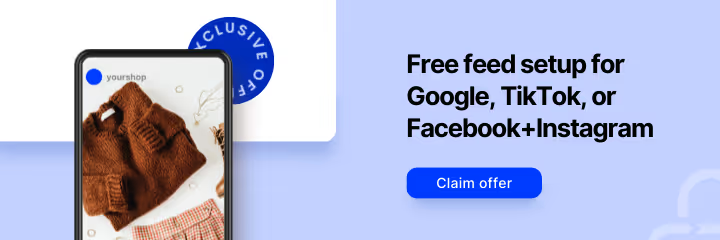If you’ve got the next big idea for a product, it’s easier than ever to make that idea a reality. But just because it’s easy to get started doesn’t mean it’s easy to find success.
Because there’s more competition than ever before. You’re not just up against a few local stores – you’re competing against retailers from across the country and around the world.
So before you launch your startup and expect to bring in the big bucks, you need a plan for reaching customers and marketing your brand.
Consider the following start-up strategies to set your retail business up for success.
Focus on building the best shopping experience.
A startup succeeds when it can satisfy its customers’ needs. So ask yourself: what do your customers need in a retail experience?
This means researching who your customers are, where they currently shop, and what they require for a positive shopping experience.
Once you have figured this out, keep these needs at the forefront of all business decisions: the design of your ecommerce site, the development of your mobile experience, the layout of your physical store (if you have one), and your plans for expansion.
Companies that make user experience a priority have increased revenue by 37%. Your customers are your best resource and guide for building your business.
Put yourself in front of your customers.
One thing you should seek in your market research is the habits of buyers online.
They may be loyal to specific online marketplaces, such as Amazon, eBay, or Walmart. Or they may be willing to look for other sites depending on different needs, such as price, product offerings, and customer service.
Rather than asking customers to find you, focus on strategies that help you find where your customers are and put your brand in front of them. This often means expanding where you list your products.
The idea of managing multiple shopping channels may seem overwhelming, but you can make use of tools like GoDataFeed to simplify the process. You’ll have one location to update, analyze, and optimize.
Establish working systems from the onset, so you can ensure you’re managing each piece of your business and are ready for growth when it happens.
Focus on mobile.
It’s no secret; mobile is the future of retail. It has grown exponentially in the past few years, and doesn’t seem to be stopping soon. By 2020, mobile commerce will be almost half of all ecommerce.
Consider mobile through every step of your marketing and content design. First things first: are the platforms where you are putting your products mobile-friendly? Is your website mobile-friendly?
When you’ve determined that your business is compatible with mobile, use mobile-oriented strategies in your marketing. You may want to set up an app, offer deals and specials specifically for mobile customers, or make use of beacons for push phone notifications.
Use excellent content to fuel your marketing.
Ecommerce is all about staying ahead of the way customers interact with brands within the world of retail. Use this innovation not just in the platforms where you put your products, but also in the way you market yourself to your customers.
The big marketing strategies now focus on connecting and relating to your audience, rather than simply telling them why they should buy your products. The days of cold calling and advertising are over – storytelling is the new way to go.
Use tools like Buzzsumo to see what the competition is doing successfully. Also, look for what they aren’t doing – because you may uncover opportunities that you can take advantage of. This is another way to put yourself in front of customers – you’re bringing them content where they already are, rather than asking them to seek you out.
Many businesses even team up with other brands. By connecting with other influencers and companies that your customers already trust and love, you can better tell your story. And you can get your message across to the people who need to hear it.
Think of it as building an audience rather than simply attracting customers. When you build your strategy with this goal, you’re more likely to foster loyalty and long-term success.
Retail Success Is Based on Much More than Just Your Product
The product line you offer is only one part of what drives retail success – or failure. Growing your start-up requires an in-depth knowledge of your customers, their problems and needs, and how you can solve them through innovation and standing out as a brand.




%20).png)
%20)%20(1).png)